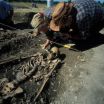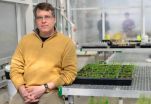(Press-News.org) Approved in 2012, Brazil's new Forest Code has few admirers. Agricultural interests argue that it threatens the livelihoods of farmers. Environmentalists counter that it imperils millions of hectares of forest, threatening to release the billions of tons of carbon they contain. A new study, co-authored by Woods Hole Research Center (WHRC) scientists Michael Coe, Marcia Macedo and Brazilian colleagues, published this week in Science, aims to clarify the new law. Entitled "Cracking Brazil's Forest Code," the article is the first to quantify the implications of recent changes to the Forest Code and identify new opportunities and challenges for conservation.
The Brazilian Forest Code is the largest single protector of forests on private properties, which contain over half of Brazil's remaining forests and savannahs. Though championed by conservationists, the law has proved challenging to enforce. As global demand for beef and animal feed increased in the early 2000s, annual deforestation in the Brazilian Amazon surged to more than 20,000 km2 per year - prompting global outrage and a redoubling of efforts to improve enforcement. These pressures inspired a backlash from agribusiness interests, who lobbied to reduce the burden put on landowners to conserve and restore forests.
The new Forest Code is the product of a long and bitter debate in the Brazilian congress, fueled by tensions between the agribusiness lobby, government enforcement agencies, and conservationists. According to the study, the new law granting amnesty to landowners who deforested illegally before 2008, reduces the area to be reforested from 500,000 km2 to 210,000 km2. "The agribusiness lobby should see this as a big win," explains lead author Britaldo Soares-Filho of the Federal University of Minas Gerais (UFMG,) "but if they continue to boycott and sabotage the Forest Code, they will be shooting themselves in the foot." Ultimately, he warns, "agricultural productivity depends on the conservation of native ecosystems and the climate stability they provide."
The recent changes affect conservation in all Brazilian biomes, including the Amazon, Cerrado, and Atlantic Forest. "Brazil has done a great job reducing deforestation in the Amazon, but the other biomes have been short-changed in the process," notes Dr. Macedo. Only 50% of the Cerrado forest remains intact and deforestation is increasing. This study estimates that the new law allows legal deforestation of an additional 400,000 km2 of the Cerrado, "That's an area almost the size of California. Allowing that to happen would be an environmental disaster," emphasizes Dr. Macedo.
Despite big losses for the environment, the law also introduced two key conservation measures that could pave the way for commoditizing standing forests in all biomes. First, it creates a new market that allows landowners to trade surplus forests (those that could be legally deforested) on one property, to offset restoration requirements on another. The study found that, if fully implemented, this could reduce the areas requiring restoration to as little as 5,500 km2 of arable land. The new law also creates an online land registry system that streamlines the process for landowners to register their property boundaries and environmental information. More advanced monitoring and documentation of over 5 million rural properties will dramatically improve enforcement. According to Dr. Coe, "No other country has attempted a registry of this scale. By allowing greater transparency, the system has the potential to help improve compliance and therefore become a big win for the environment."
The Forest Code continues to be difficult to enforce and some worry that the amnesty provided for illegal deforestation may set a dangerous precedent, creating the expectation of impunity for future deforestation. "To be effective, the Forest Code must be tied to economic incentives that reward landowners who conserve native vegetation," says co-author Raoni Rajão of UFMG.
Fortunately, private initiatives have sprung up to support compliance in the form of international certification standards, commodity roundtables, and boycotts of products produced on newly deforested land. New public initiatives like Brazil's Low-Carbon Agriculture Program, which provides US$1.5 billion in annual subsidized loans to improve agricultural production, while reducing associated carbon emissions, are also key. Such initiatives will be critical if Brazil hopes to succeed in reconciling environmental conservation and agricultural development.
INFORMATION:
WHRC is an independent research institute where scientists investigate the drivers and impacts of climate change to identify opportunities for conservation, restoration and economic development around the globe.
This study was made possible by Secretaria de Assuntos, Estratégicos da Presidência da República, the Climate and Land Use Alliance, Fundação de Amparo à Pesquisa do Estado de Minas Gerais, Conselho Nacional de Desenvolvimento Científico e Tecnológico, Deutsche Gesellschaft für Internationale Zusammenarbeit, Servamb, the Gordon and Betty Moore Foundation,the National Aeronautics and Space Administration, and the National Science Foundation.
Untangling Brazil's controversial new forest code
2014-04-24
ELSE PRESS RELEASES FROM THIS DATE:
Genomic diversity and admixture differs for Stone-Age Scandinavian foragers and farmers
2014-04-24
An international team led by researchers at Uppsala University and Stockholm University reports a breakthrough on understanding the demographic history of Stone-Age humans. A genomic analysis of eleven Stone-Age human remains from Scandinavia revealed that expanding Stone-age farmers assimilated local hunter-gatherers and that the hunter-gatherers were historically in lower numbers than the farmers. The study is published today, ahead of print, in the journal Science.
The transition between a hunting-gathering lifestyle and a farming lifestyle has been debated for a century. ...
Some corals adjusting to rising ocean temperatures, Stanford researchers say
2014-04-24
To most people, 86-degree Fahrenheit water is pleasant for bathing and swimming. To most sea creatures, however, it's deadly. As climate change heats up ocean temperatures, the future of species such as coral, which provides sustenance and livelihoods to a billion people, is threatened.
Through an innovative experiment, Stanford researchers led by biology Professor Steve Palumbi have shown that some corals can – on the fly – adjust their internal functions to tolerate hot water 50 times faster than they would adapt through evolutionary change alone. The findings, published ...
Genetic code of the deadly tsetse fly unraveled
2014-04-24
A decade-long effort by members of the International Glossina Genome Initiative (IGGI) has produced the first complete genome sequence of the tsetse fly, Glossina morsitans. The blood-sucking insect is the sole transmitter of sleeping sickness, a potentially deadly disease endemic in sub-Saharan Africa. The vast store of genetic data will help researchers develop new ways to prevent the disease and provide insights into the tsetse fly's unique biology.
The tsetse fly is quite unique in the insect world: it feeds exclusively on the blood of humans and animals, gives birth ...
Study finds accelerated soil carbon loss, increasing the rate of climate change
2014-04-24
Research published in Science today found that increased levels of carbon dioxide in the atmosphere cause soil microbes to produce more carbon dioxide, accelerating climate change.
Two Northern Arizona University researchers led the study, which challenges previous understanding about how carbon accumulates in soil. Increased levels of CO2 accelerate plant growth, which causes more absorption of CO2 through photosynthesis.
Until now, the accepted belief was that carbon is then stored in wood and soil for a long time, slowing climate change. Yet this new research suggests ...
The Ancient Maya and virtual worlds: Different perspectives on material meanings
2014-04-24
If Facebook were around 1,400 years ago, the ancient Maya might have been big fans of the virtual self.
The Maya believed that part of your identity could inhabit material objects, like a courtier's mirror or sculptor's carving tool. Maya might even name these objects, talk to them or take them to special events. They considered these items to be alive.
The practice of sharing your identity with material possessions might seem unusual in a modern context.
But is it that different from today's selfie-snapping, candy-crushing online culture, where social media profiles ...
Autism Genome Project delivers genetic discovery
2014-04-24
NEW YORK, N.Y. (April 24, 2014) – A new study from investigators with the Autism Genome Project, the world's largest research project on identifying genes associated with risk for autism, has found that the comprehensive use of copy number variant (CNV) genetic testing offers an important tool in individualized diagnosis and treatment of autism.
Funded primarily by Autism Speaks, the world's leading autism science and advocacy organization, the Autism Genome Project involved more than 50 research centers in 11 countries. The report, published today in the American Journal ...
Measles commentary in Annals of Internal Medicine
2014-04-24
1. Measles outbreaks prompt concern about physician knowledge gaps
Vaccination refusal and importation of the disease has led to increased incidence of measles in the United States. Before widespread vaccination, approximately 500,000 measles cases occurred annually, resulting in 500 deaths and 48,000 hospitalizations. Vaccination programs helped to eradicate endemic measles by the year 2000, reducing the median number of cases per year to 60. But in just the first three months of 2014, 106 measles cases were reported, prompting health officials to become concerned. Measles ...
Plants send out signals attracting harmful bacteria, MU study finds
2014-04-24
COLUMBIA, Mo. – When bacteria attack plants, they often inject harmful proteins into the host plants' cells to weaken and suppress natural defenses. However, in some plants, bacteria attack once they've recognized the plant cells as a potential host. Now, researchers at the University of Missouri have identified and replicated the process that allows the bacteria—known mostly for attacking tomatoes—to invade its host. This discovery could lead to natural anti-infective treatments that work with food-producing plants to enhance resistance to harmful bacteria in the field.
"When ...
Genome yields insights into golden eagle vision, smell
2014-04-24
WEST LAFAYETTE, Ind. - Purdue and West Virginia University researchers are the first to sequence the genome of the golden eagle, providing a bird's-eye view of eagle features that could lead to more effective conservation strategies.
Their study calls into question long-held assumptions about golden eagle vision, indicating that the raptors may not be as sensitive to ultraviolet light as previously thought. The genome also suggests that golden eagles could have a sharper sense of smell than researchers realized.
Additionally, the genome provides thousands of genetic ...
International collaboration unravels novel mechanism for neurological disorder
2014-04-24
HOUSTON – (April 24, 2014) – A team of international scientists led by Baylor College of Medicine has discovered a novel gene (CLP1) associated with a neurological disorder affecting both the peripheral and central nervous systems. Together with scientists in Vienna they show that disturbance of a very basic biological process, tRNA biogenesis, can result in cell death of neural progenitor cells. This leads to abnormal brain development and a small head circumference as well as dysfunction of peripheral nerves.
The study published today in the current issue of the journal ...






